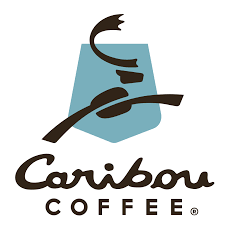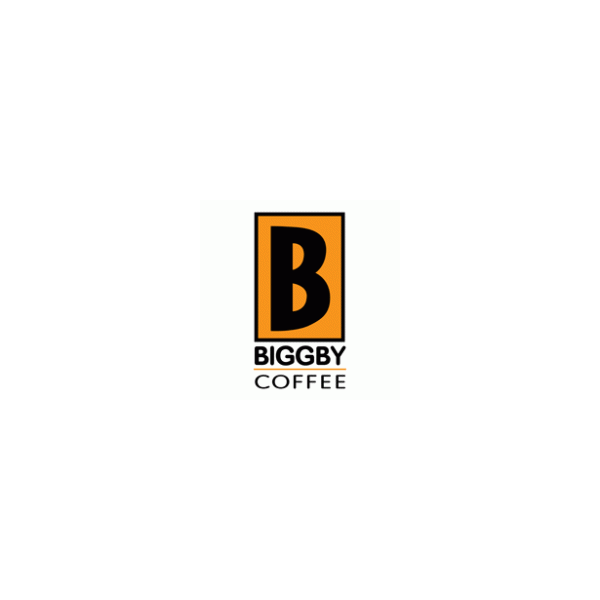Peet’s Coffee Franchise / License Analysis For 2025
Interesting in Coffee Stores? Peet’s Coffee is a San Francisco Bay Area-based specialty coffee roaster and retailer. Click here to learn more

Table of Contents:
Peet’s Coffee is a San Francisco Bay Area-based specialty coffee roaster and retailer owned by JAB Holding Company via JDE Peet’s, a Dutch company that owns numerous beverage brands. Founded in 1966, Alfred Peet opened the first Peet’s Coffee near the University of California, Berkeley campus, introducing the United States to its darker roasted Arabica coffee.
Since its first opening in 1966, Peet’s Coffee has changed hands among multiple companies. In 2001, the company was incorporated as Peet’s Coffee and Tea Company and had its IPO with the ticker ‘PEET.’ It was taken private in 2012 by Joh. A Benckiser, a German investment group, for $977.6 million.
Since then, Peet’s has grown rapidly, opening new stores and plants and acquiring new brands. In 2020, JDE Peet’s, the owner of Peet’s Coffee went public on the Euronext Amsterdam stock exchange in a deal that valued the company at $17.3 billion. This was the largest initial public offering in Europe during the first five months of 2020 and the second biggest IPO in the world.
JDE Peet’s has developed its own supply chain, producing products from bean to cup, including Peet’s Coffee. The company sources coffee, tea, and other agricultural products from more than 30 countries, works with more than 900 direct material suppliers across 83 countries and manufactures products primarily at 43 facilities in 24 countries.
The Majority of Units are Corporate-owned
As Peet’s Coffee grows rapidly across the states, it is not a franchise. All of its locations are corporately owned, or licensed partnerships with existing businesses. Licensed partners are allowed to use the brand’s trademark and sell their products but are not obligated to follow any specific business plan or rules. Similar to franchising, the licensed partners are required to pay a royalty fee to the company.
After opening the first Peet’s location in Shanghai, China in 2017, Peet’s Coffee continues to expand in China. In 2021, the number of Peet’s Coffee stores in China increased by 37 to 70 stores.
Number of Peet’s Coffee Store Locations
Currently, Peet’s Coffee has 339 stores located in the U.S. across 9 states. Specifically, California has the most number of stores. Meanwhile, Peet’s Coffee is sold in over 14,000 grocery stores across the U.S.
Peet’s Licensed Partnerships
Peet’s has outlets at many transit centers, including airports such as John F. Kennedy International Airport, Philadelphia International Airport, and all three major airports in the San Francisco Bay Area. Peet’s also has stores operated on university campuses. The first full-service Peet’s Coffee Bar was opened at Stanford University and UC Berkeley in 2005. Similarly, in 2009, coffee bars were opened in several other schools, including Villanova University and UC San Diego.
Additionally, Peet’s donated $25,000 to UC Davis to launch the Coffee Center, a research hub dedicated to a multidisciplinary study of coffee, the first university in the world to dedicate an academic focus to post-harvest coffee.
Peet’s Coffee Increasing Revenues and Profits
As the U.S. started to re-open in 2021, consumption patterns started to gradually go back to normal, where the coffee retail stores particularly benefit from increased consumer traffic. Peet’s away-from-home channel has witnessed a meaningful rebound driven by a mid-twenties growth in same-store sales in its coffee retail stores. Organic growth was driven by volume growth of 8.9% and 3.4% price. Its sales increased by 7.8% from EUR 838 million in 2020 to EUR 903 million in 2021. Adjusted EBIT increased organically by 20.8% to EUR 118 million.
| PEET’S – In EUR million, unless otherwise stated | ||||
|---|---|---|---|---|
| 2021 | 2020 | Change | Organic Change | |
| Sales | 903 | 838 | 7.8% | 12.3% |
| Adjusted EBIT | 118 | 98 | 20.3% | 20.8% |
JDE Peet’s Income Statement Takeaways
In 2021, JDE Peet’s total sales reached EUR 7 billion, with a 6.1% increase in organic sales growth, resulting in EUR 1.1 billion operating profit. Meanwhile, 4,500 cups of coffee and tea are served every second. With increasing revenues, JDE Peet’s even saw a decrease in SGA and a slight increase in the cost of sales.
CONSOLIDATED INCOME STATEMENT
| For the years ended 31 December 2021 and 31 December 2020 – In EUR million, unless stated otherwise | |||
| NOTE | 2021 | 2020 | |
| Revenue | 2.2 | 7,001 | 6,651 |
| Cost of sales | 2.3 | (4,028) | (3,818) |
| Selling, general and administrative expenses | 2.3 | (1,865) | (1,900) |
| Operating profit | 1,108 | 933 | |
| Finance income | 5.4 | 31 | 44 |
| Finance expense | 5.4 | (156) | (290) |
| Share of net loss of associates | (1) | – | |
| Income tax expense | 8 | (220) | (320) |
| Net (loss) income | 762 | 367 | |
| ATTRIBUTABLE TO: | NOTE | 2021 | 2020 |
|---|---|---|---|
| Owners of the parent | 765 | 308 | |
| Non-controlling interest | (3) | 59 | |
| Profit for the period | 762 | 367 | |
| Earnings per share: | |||
| Basic earnings per share (in EUR) | 2.4 | 1.53 | 0.80 |
| Diluted earnings per share (in EUR) | 2.4 | 1.51 | 0.79 |
JDE Peet’s Cash Flows Statement Takeaways
Liquidity is one of the most important measurements of a company’s ability to meet potential cash requirements, including ongoing commitments to repay borrowings, fund business operations, operations, and expansion of franchised restaurant locations. According to the cash flows statement, JDE Peet’s has a EUR 248 million increase in cash and cash equivalents. At the end of the fiscal year, its total cash and cash equivalents amounted to approximately EUR 662 million.
JDE Peet’s significantly optimized its financial position and capital structure in 2021, as the company substantially reduced the leverage and average cost of debt.
CONSOLIDATED STATEMENT OF CASH FLOW
| For the years ended 31 December 2021 and 31 December 2020 – In EUR million | |||
| NOTE | 2021 | 2020 | |
| Profit for the period | 762 | 367 | |
| Adjustments for: | |||
| Depreciation, amortisation, and impairments | 3.4, 3.2 | 394 | 450 |
| Defined benefit pension expense | 9.1 | 10 | 17 |
| Share-based payments | 7.1 | 34 | 46 |
| (Gain) / loss on sale of property, plant, equipment and intangible assets | 5 | 24 | |
| (Gain) / loss on disposal of subsidiary | (2) | 12 | |
| Income tax expense | 8 | 220 | 320 |
| Interest income on bank accounts and other | 5.4 | (29) | (43) |
| Interest expense | 5.4 | 141 | 180 |
| Provision charges | 9.2 | 5 | 44 |
| Derivative financial instruments | (189) | 210 | |
| Foreign exchange (gains) / losses | 5.4 | 129 | (114) |
| Other | (7) | (10) | |
| Changes in operating assets and liabilities: | |||
| Inventories | 4.1 | (139) | (62) |
| Trade and other receivables | 4.2 | (42) | 85 |
| Trade and other payables | 4.3 | 520 | 41 |
| Pension payments | 9.1 | (11) | (13) |
| Payments of provisions | 9.2 | (41) | (20) |
| Realised foreign exchange (gains) / losses | (88) | 66 | |
| Receipts / (payments) of derivative financial instruments | 156 | (107) | |
| Income tax payments | (205) | (364) | |
| Net cash provided by operating activities | 1,623 | 1,129 | |
| Cash flows from investing activities: | |||
| Purchases of property, plant and equipment | 3.4 | (239) | (229) |
| Purchases of intangibles | 3.2 | (16) | /23) |
| Proceeds from sale of property, plant, equipments and intangible assets | 3.4 | 7 | 1 |
| Proceeds from disposal of subsidiary | 4 | – | |
| Acquisition of businesses, net of cash acquired | 3.1 | (68) | (5) |
| Loans provided | 7.2 | (1) | (8) |
| Interest received | 22 | 32 | |
| Other investing activities | (2) | 2 | |
| Net cash used in investing activities | (293) | (230) | |
| Cash flows from financing activities: | |||
| Additions to borrowings | 5.2 | 9,813 | 677 |
| Repayments from borrowinsg | 5.2 | (10,613) | (2,456) |
| Proceeds from /(repayments to) issuing ordinary shares | 5.1 | 5 | 785 |
| Receipts from / (payments to) derivated financial instruments | 6.7 | (19) | (4) |
| Dividend paid to shareholders | 5.1 | (176) | (89) |
| Interest paid | (119) | (159) | |
| Investments / (divestments) by non-controlling shareholders | 5.1 | 8 | 39 |
| Other financing | (6) | (15) | |
| Net cash used in financing activities | (1,107) | (1,222) | |
| Effect of exchange rate changes on cash | 25 | (74) | |
| Net increase / (decrease) in cash and cash equipment | 248 | (397) | |
| Cash and cash equipments-at the start of period | 5.3 | 414 | 811 |
| Cash and cash equivalents – as of 31 December | 662 | 414 | |
Alternatives to Peet’s Coffee Franchise Opportunities
Although Peet’s Coffee currently does not provide opportunities for franchising, there are other alternatives to franchising if you are interested in the coffee industry.
1. Caribou Coffee
One of the alternatives is franchising with Caribou Coffee, which is also owned by the JAB Holding Company. Caribou Coffee operates in a similar format to Peet’s Coffee – with a full chain of coffee manufacturing, a Caribou Coffee franchisee will operate a retail coffee shop business featuring coffee, coffee-based beverages, and teas.
Caribou coffee offers franchisees for the operation of the retail shops of varying sizes: a “Chalet,” “Cabin,” and “Kiosk.” Specifically, “Chalet” and “Cabin” operate at stand-alone or more traditional locations, and “Kiosk” typically operates at non-traditional facilities, including college campuses. “Chalet” is the largest format with dine-in and drive-thru available, while “Cabin” is drive-thru only.
Total Investment Necessary to Begin Operation in 2022 (excluding leases)
| Type of Operation | Total Investment in 2022 |
| Chalet | $722,100 – $1,146,300 |
| Cabin | $446,100 – $732,300 |
| Kiosk | $249,100 – $606,300 |
Once the operations begin, franchisees are expected to pay the company a royalty fee of 5% on gross sales for “Cabin” and “Chalet” and a royalty fee of 6% on gross sales for “Kiosk.” Each franchisee is required to pay another up to 3% of gross sales on marketing.
In 2021, the average Kiosk franchise sales were $633,227. With a midpoint initial investment of $427,700, at an average of 17.5% profit margin, it will take around 5.5 years to recoup the initial investment, including 1.5 years to scale up. Furthermore, Caribou Coffee franchising has a significantly low failure rate of 2.87%, indicating a stable business.
2. Dunkin’ Donuts
Dunkin’ Donuts, also known as Dunkin’ and DD, is an American multinational coffee and doughnut chain. It was founded by Bill Rosenberg in Quincy, MA in 1950. It began rebranding as a “beverage-led company”, and was renamed Dunkin’, in 2019 with stores in the U.S. beginning to use the new name. The rebranding is to eventually be rolled out to all international locations. With approximately 12,900 locations in 42 countries, Dunkin’ is one of the largest coffee shop chains in the world. At the close of 2021, there were 8,000+ Dunkin’ franchised locations in the US.
Based on the median sales provided by Dunkin’s Drive-Thru franchise locations, at an average of a 15% profit margin it will take around 5.5 years to recoup your investment. This is in the same range as other franchise opportunities. You may not get a 15% profit margin which would elongate getting a return on your investment. Dunkin’ Donuts offers people the opportunity to be a part of a business that has high net sales and is rapidly expanding. It is impossible to understate the brand recognition that Dunkin’ has in the US market.
3. Biggby
Biggby is a community coffee shop chain with offerings of espresso beverages, sandwiches, baked goods, etc. Their franchise is generally operated from either a free-standing, storefront or strip center location or a prefabricated modular structure. Biggby has a very high focus on community integration which they credit for their economic recovery after COVID. Robert P. Fish is a Co-Founder and Co-CEO of Biggby since April 2016 along with Michael J. McFall. Both of them are managing members of Global Orange, Biggby’s associates.
A 15% profit margin would mean it would take nearly 4.5 years to recoup your investment. Based solely on the Franchise Disclosure Document, Biggby may be an exciting investment opportunity for potential franchisees. The company presents itself as an up-and-coming player in the industry focused heavily on community values and engagement. It is offering a chance to be a part of an industry that has been long present. While still in its early stages, Biggby Coffee’s growth seems to be accelerating.
Conclusion
Overall, Peet’s Coffee is a profitable company that operates both company-owned and licensed units. The specialty and reputation in coffee have helped Peet’s survive the COVID-19 pandemic with positive net income. Immediately, the company is back on track as soon as things start to turn around.
In addition to expanding nationally, Peet’s has put effort into expanding the international market, especially in China. Although Peet’s Coffee only offers licensing partnerships, it is worth looking at other franchise opportunities in the coffee industry as well.



